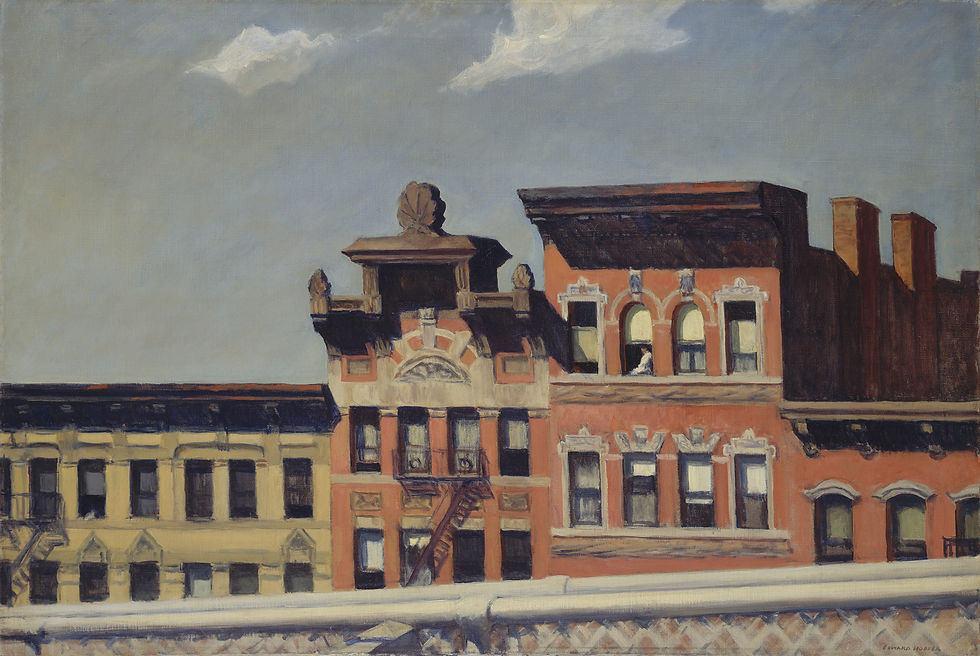Edward Hopper's Lonely New York City
- Russ Ramsey

- Jan 25, 2023
- 2 min read
For this Art Wednesday we’ll look at one of my personal favorites—Edward Hopper. Specifically, we’ll look at his unique ability to render the loneliness of New York City.

Edward Hopper, From Williamsburg Bridge, 1928
Two people in a tiny apartment. We are voyeurs. He reads. She plinks a note or two on the piano. They are dressed up, maybe about to go out. They do not interact. They are alone together.

Edward Hopper, Room in New York, 1932
Empty sidewalk. Empty desk. The secretary opens a letter. She is beautiful. Two coworkers are in the background. Hopper puts them in a terrarium-like box framed by the building’s walls.

Edward Hopper, New York Office, 1962
An empty stoop. Empty sidewalks, except for a nurse pushing a baby carriage. Wind pushes against them.

Edward Hopper, New York Pavements, 1924
A large theater lobby, where the masses gather to engage culture. Only a few occupy the space. The show has yet to begin. Soon the place will teem with life, but now it is a waiting room.

Edward Hopper, Sheridan Theatre, 1937
Follow the gaze. The woman sits in front of the window, but she isn’t necessarily looking out. Her gaze goes to an unnatural point—one of Hopper’s techniques for conveying loneliness.

Edward Hopper, Room in Brooklyn, 1932
I absolutely love this one. People in the same space experiencing it in very different ways. They came to be entertained. She came to work. They consume the occasion. She waits for its end.

Edward Hopper, New York Movie, 1939
An automat is a restaurant of vending machines. It is cold. She sits alone with a coffee she served herself, one glove removed to feel the warmth. The lights reflect a room that goes on and on.

Edward Hopper, The Automat, 1927
That’s it for today’s lonesome Art Wednesday. Hopper’s lonely city resonates because people know what it is like to be surrounded by others and still feel alone. It is not good for us to be alone.








Comments